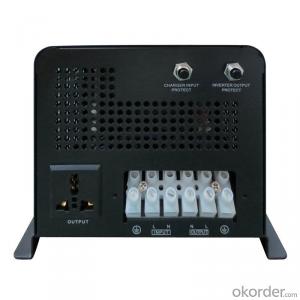2000W Pure Sine Wave InverterTop Selling South Africa CE Approved EP 3000 24V
- Loading Port:
- China main port
- Payment Terms:
- TT OR LC
- Min Order Qty:
- 100 pc
- Supply Capability:
- 1000 pc/month
OKorder Service Pledge
OKorder Financial Service
You Might Also Like
High efficiency over 90%
12Vac/24Vac/48Vac
Max.charge current 70A
Inbuilt pure copper transformer
Automatic three-stage battery Charger
RS232 with free CD(option)
Solar first function(option)
Charge current adjustable(option)
Remote control(option)
CE certificate, Soncap certificate.
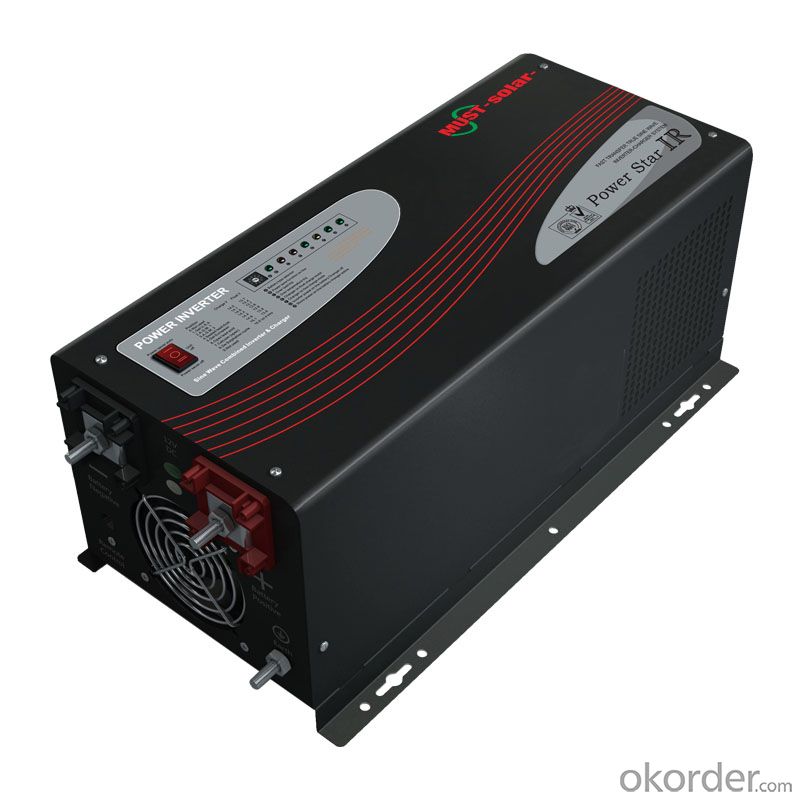


| MODEL | EP3000 Series 1-3KW | ||||||
| EP3000 | 1012E | 1512E | 2012E | 2024E | 3012E | 3024E | 3048E |
| LINE MODE SPECIFICATIONS: | |||||||
| Input Voltage Waveform | Sine wave (utility or generator) | ||||||
| Nominal Input Voltage | 230Vac(120VAC selectable) | ||||||
| Low Line Disconnect | 155Vac±2% | ||||||
| Low Line Re-connect | 164Vac ±2% | ||||||
| High Line Disconnect | 272Vac±2% | ||||||
| High Line Re-connect | 265Vac±4% | ||||||
| Max AC Input Voltage | 270Vrms | ||||||
| Nominal Input Frequency | 50Hz/ 60Hz(Auto detection) | ||||||
| Low Line Frequency Re-connect | 58+0.3Hz for 60Hz;48+0.3Hz for 50Hz; | ||||||
| Low Line Frequency Disconnect | 57+0.3Hz for 60Hz;47+0.3Hz for 50Hz; | ||||||
| High Line Frequency Re-connect | 64+0.3Hz for 60Hz;54+0.3Hz for 50Hz; | ||||||
| High Line Frequency Disconnect | 65+0.3Hz for 60Hz;55+0.3Hz for 50Hz; | ||||||
| Output Voltage Waveform | As same as Input Waveform | ||||||
| Over-Load Protection(SMPSload) | Circuit breaker | ||||||
| Output Short Circuit Protection | Circuit breaker | ||||||
| Efficiency (Line Mode) | >95% | ||||||
| Transfer Switch Rating | 30A | ||||||
| Transfer Time (Ac to Dc) | 10ms (typical) | ||||||
| Transfer Time (Dc to Ac) | 10ms (typical) | ||||||
| Pass Through Without Battery | Yes | ||||||
| Max Bypass Overload Current | 30A | ||||||
| INVERT MODE SPECIFICATIONS: | |||||||
| Output Voltage Waveform | Sine wave | ||||||
| Rated Output Power (VA) | 1000 | 1500 | 2000 | 2000 | 3000 | 3000 | 3000 |
| Rated Output Power (W) | 1000 | 1500 | 2000 | 2000 | 3000 | 3000 | 3000 |
| Power Factor | 0~1.0 | ||||||
| Nominal Output Voltage (V) | 230Vac | ||||||
| Nominal Output Frequency (Hz) | 50Hz ± 0.3Hz | ||||||
| Auto Tracking Main Frequency(Hz) | Yes (Following Main first connection)50Hz @48-54Hz ;60Hz @58-64Hz | ||||||
| Output Voltage Regulation | ±10% rms | ||||||
| Nominal Efficiency | >80% | ||||||
| Over-Load Protection(SMPS load) | (110%150% ±10%:Fault (shutdown output) after 20s; | ||||||
| Surge Rating (10s) | 3000VA | 4500VA | 6000VA | 6000VA | 9000VA | 9000VA | 9000VA |
| Capable Of Starting Electric Motor | 1 HP | 1 HP | 1 HP | 1 HP | 2HP | 2 HP | 2 HP |
| Output Short Circuit Protection | Current limit (Fault after 10s) | ||||||
| Inverter Breaker Size | 10A | 10A | 30A | 30A | 30A | 30A | 30A |
| Nominal DC Input Voltage | 12V | 12V | 12V | 24V | 12V | 24V | 48V |
| Min DC Start Voltage | 10V/20V/40V | ||||||
| Low Battery Alarm | 10.5Vdc ± 0.3Vdc for 12V battery;21.0Vdc ± 0.6Vdc for 24V battery;42.0Vdc ± 0.6Vdc for 48V battery | ||||||
| Low DC Input Shut-Down | 10.0Vdc ± 0.3Vdc for 12V battery;20.0vdc± 0.6Vdc for 24V battery;40.0Vdc± 0.6Vdc for 48V battery | ||||||
| High DC Input Alarm & Fault | 16Vdc ± 0.3Vdc for 12V battery;32Vdc ± 0.6Vdc for 24V battery; 64Vdc ± 0.6Vdc for 48V battery | ||||||
| High DC Input Recovery | 15.5Vdc ± 0.3Vdc for 12V battery;31.0Vdc ± 0.6Vdc for 24V battery; 62.0Vdc ± 0.6Vdc for 48V battery | ||||||
| Power Saver | Load ≤25W (Enabled on "P/S auto" setting of Remote control) | ||||||
| CHARGE MODE SPECIFICATIONS: | |||||||
| Nominal Input Voltage | 230Vac | ||||||
| Input Voltage Range | 165V-265V | ||||||
| Nominal Output Voltage | According to the battery type | ||||||
| Nominal Charge Current | 35A | 45A | 65A | 35A | 75A | 45A | 30A |
| Charge Current Regulation | ± 5Adc | ||||||
| Battery Initial Voltage | 0 –15.7 Vdc/31.4Vdc/62.8Vdc (can operate with 0V battery) | ||||||
| Charger Short Circuit Protection | Circuit breaker | ||||||
| Over Charge Protection | Bat. V ≥ 15.7Vdc/31.4Vdc/62.8Vdc,beeps 0.5s every 1s & fault after 60s | ||||||
| GENERAL SPECIFICATIONS: | |||||||
| Safety Certification | CE | ||||||
| Operating Temperature Range | 0°C to 40°C | ||||||
| Storage Temperature | 15°C below zero to 60°C | ||||||
| Operation Humidity | 5% to 95% | ||||||
| Audible Noise | 60dB max | ||||||
| Cooling | Forced air, variable speed fan | ||||||
| Size | 1012E/1024E/2012E/2024E/2048E | ||||||
| 3012E/3024E/3048E: | |||||||
| G.W | 1kw-20KG 1.5kw,2kw-23KG 3kw-28KG | ||||||
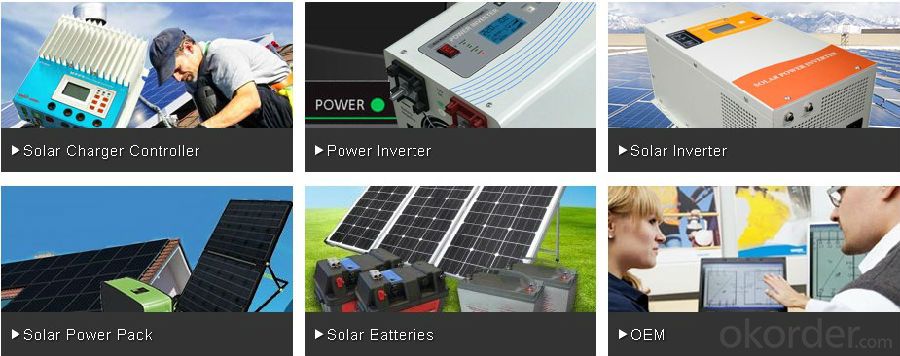
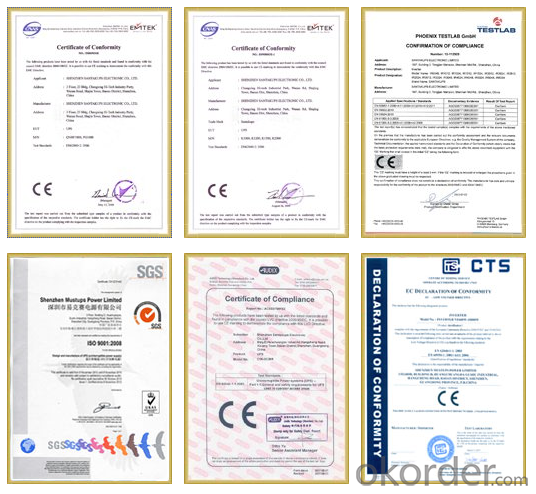
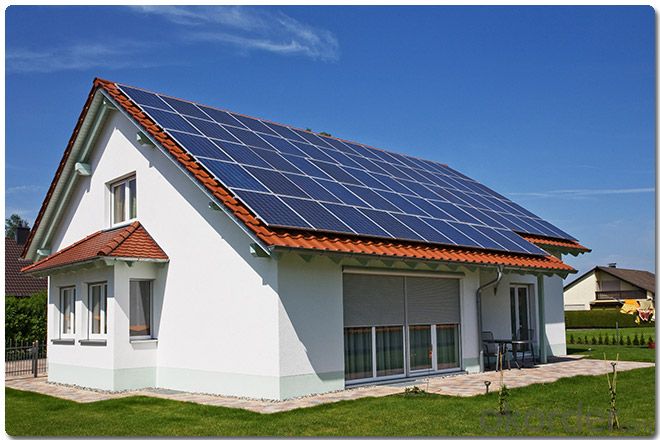
Warrenty
provides a 1~3 year limited warranty (“Warranty”) against defects in materials and workmanship for its Uninterruptible power supply, Power inverter/chargers, Solar charge controllers, Battery Products (“Product”).
The term of this Warranty begins on the Product(s) initial purchase date, or the date of receipt of the Product(s) by the end user, whichever is later. This must be indicated on the invoice, bill of sale, and/or warranty registration card submitted to MUST-Solar. This Warranty applies to the original MUST-Solar Product purchaser, and is transferable only if the Product remains installed in the original use location.
FAQ
1. How do I decide which system is right for me ?
For protection from long outages, include a generator or solar panels in your Must solar system. Shorter outages can be handled by a battery-only system.
2. Where my system will be installed ?
Must solar systems are usually wall-mounted near a home's main electrical (circuit breaker) panel.
3. How do I install my system ?
A must solar backup inverter is connected to a home electric system , we will supply detailed installation manual and videos for our customers .
- Q: What is the role of anti-islanding protection in a solar inverter?
- The role of anti-islanding protection in a solar inverter is to ensure the safety of utility workers and prevent damage to the electrical grid during a power outage. It detects when the grid goes down and immediately disconnects the solar inverter from the grid, isolating it to prevent any power from flowing back into the grid. This prevents the phenomenon known as islanding, where the solar system continues to generate power and creates a potential danger for utility workers who may be working on the lines believing they are de-energized. By disconnecting from the grid, anti-islanding protection helps maintain the stability and integrity of the electrical system.
- Q: What is the role of a solar inverter in preventing system downtime?
- The role of a solar inverter in preventing system downtime is to efficiently convert the DC power generated by solar panels into AC power that can be used by electrical devices. It ensures the smooth operation of the solar power system by regulating the flow of electricity, monitoring voltage levels, and protecting against potential issues such as overloading or short circuits. By maintaining a stable and reliable power supply, the solar inverter plays a crucial role in minimizing system failures and downtime.
- Q: Can a solar inverter be upgraded or expanded in the future?
- Yes, a solar inverter can be upgraded or expanded in the future. Inverter technology is constantly evolving, and manufacturers often release firmware updates or offer hardware upgrades to improve performance, add new features, or increase capacity. Additionally, in case of increased energy demands or the addition of more solar panels, it is possible to expand the system's capacity by adding additional inverters or upgrading the existing inverter to a higher capacity model.
- Q: Can a solar inverter be installed outdoors?
- Yes, a solar inverter can be installed outdoors. However, it is important to ensure that the inverter is specifically designed for outdoor use and is protected from extreme weather conditions such as rain, snow, and excessive heat.
- Q: Can a solar inverter be used with a solar-powered air conditioning system?
- Yes, a solar inverter can be used with a solar-powered air conditioning system. A solar inverter is responsible for converting the direct current (DC) produced by solar panels into alternating current (AC) that can be used to power appliances. In the case of a solar-powered air conditioning system, the solar inverter enables the AC produced by the solar panels to be used by the air conditioning unit. This allows for the efficient use of solar energy to power the air conditioning system, reducing reliance on the grid and promoting sustainability.
- Q: Can a solar inverter be used with solar-powered agricultural equipment?
- Yes, a solar inverter can be used with solar-powered agricultural equipment. A solar inverter is an essential component of a solar power system as it converts the direct current (DC) electricity generated by solar panels into usable alternating current (AC) electricity. This AC electricity can then power various agricultural equipment, such as irrigation systems, pumps, and machinery, allowing them to operate efficiently using clean and renewable solar energy.
- Q: What is the lifespan of the capacitors in a solar inverter?
- The lifespan of capacitors in a solar inverter can vary depending on several factors such as the quality of the capacitors used, operating conditions, and maintenance. However, on average, capacitors in a solar inverter can have a lifespan of around 10 to 15 years.
- Q: How does a solar inverter handle sudden changes in solar irradiation?
- A solar inverter handles sudden changes in solar irradiation by constantly monitoring the incoming solar energy and adjusting its output power accordingly. When there is a sudden increase in solar irradiation, the inverter increases its power output to match the higher energy generation. Similarly, when there is a sudden decrease in solar irradiation, the inverter reduces its power output to align with the lower energy production. This dynamic response ensures the inverter efficiently converts the available solar energy into usable electricity, regardless of variations in solar irradiation.
- Q: What is the role of an anti-islanding feature in a solar inverter?
- The role of an anti-islanding feature in a solar inverter is to ensure the safety of utility workers during power outages. It detects when the grid goes down and immediately disconnects the solar system from the grid to prevent the flow of electricity back into the grid. This prevents the potential danger of utility workers being exposed to live electricity while working on the grid.
- Q: What are the common fault indications in a solar inverter?
- Some common fault indications in a solar inverter include error codes displayed on the inverter's screen, abnormal or fluctuating power output, frequent tripping or shutting down of the inverter, unusual noises or vibrations, and failure to connect or communicate with the monitoring system. These fault indications often suggest issues such as overheating, overvoltage, overcurrent, ground faults, or component failure within the inverter.
Send your message to us
2000W Pure Sine Wave InverterTop Selling South Africa CE Approved EP 3000 24V
- Loading Port:
- China main port
- Payment Terms:
- TT OR LC
- Min Order Qty:
- 100 pc
- Supply Capability:
- 1000 pc/month
OKorder Service Pledge
OKorder Financial Service
Similar products
Hot products
Hot Searches
Related keywords

















